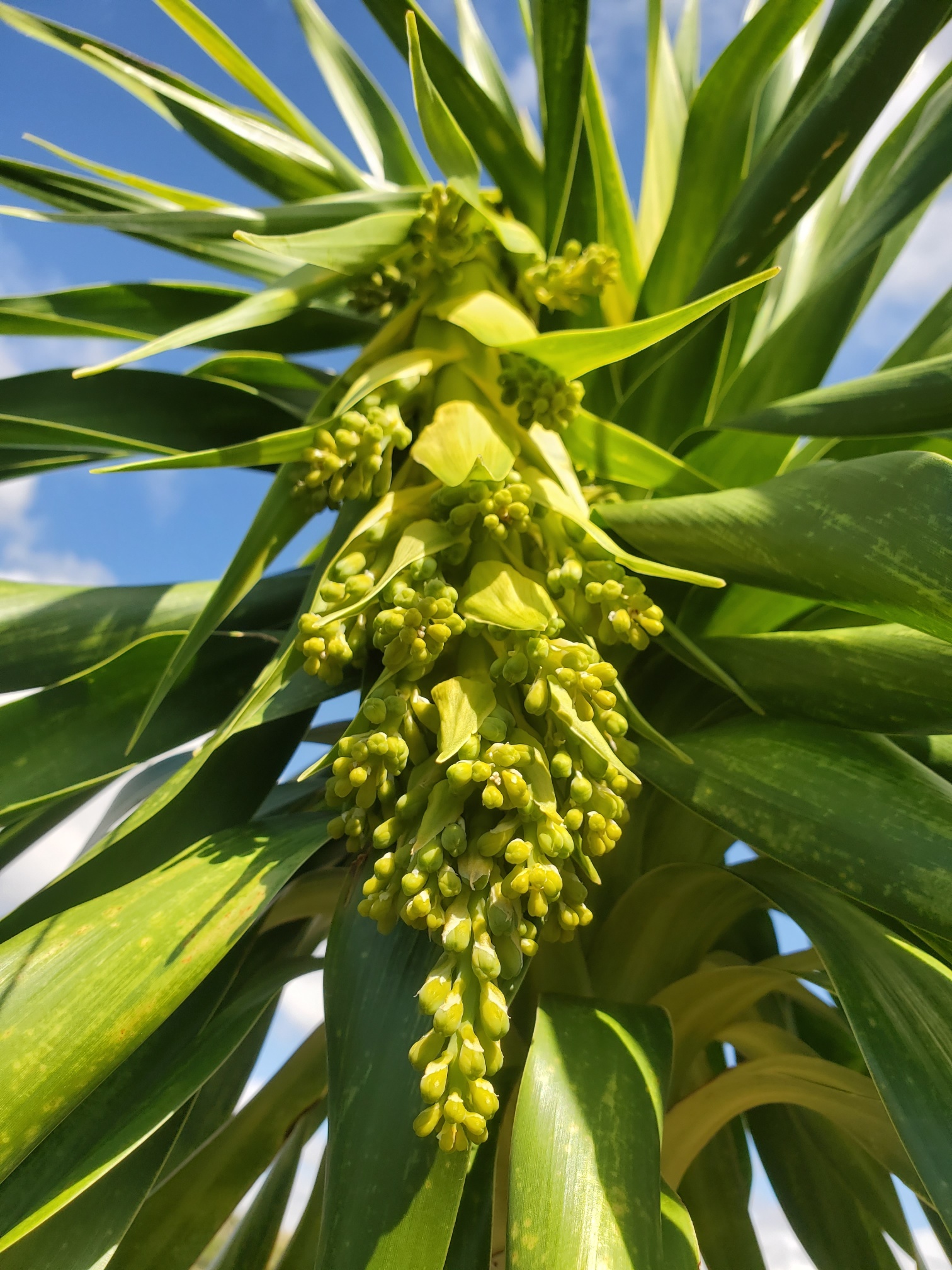Unique in the dry forest landscape, hala pepe or Chrysodracon hawaiiensis (formerly Pleomele hawaiiensis), certainly stands out in the Waikoloa Dry Forest Preserve. A member of the Asparagaceae family, this long-lived tree is related to many plants that people have lovingly planted in their yards such as agave, dracaena (money tree), and tī. Across the state, there are six endemic species of hala pepe and each is found only in a specific region or island in the Hawaiian Island chain. C. hawaiiensis is exclusively found on Hawai‘i island and the last remaining populations occur at Pu‘u Wa‘awa‘a, Ka‘ūpūlehu, the Ka‘ū districts and Hōlei Pali in Puna. The natural range for hala pepe is from roughly 985’ to 2,800’ elevation in dry to occasionally mesic forests. With their interesting appearance, hala pepe are easily identified by their simple, slender leaves with prominent spiraled leaf scars on the younger branches. The flowers will appear on a large drooping panicle and will be perfect (both male and female on the same flower) and appear in multiples of three. Once pollinated, a reddish berry will form containing anywhere between one and three tan seeds.
Although relatively uncommon in the home landscape, hala pepe can be a great accent or specimen plant. This short statured tree (15-30’), requires virtually no maintenance once established and appears lush and verdant in even the driest of times. If anything, the hala pepe will be harmed by over-watering and prefers a well-draining soil to prevent root rot. If using this plant in the landscape, plant in full sun, use minimal water until established, and enjoy this drought and wind tolerant native plant!
In more abundant times, hala pepe was used medicinally, being combined with other dry forest species such as ‘uhaloa and pōpolo to treat conditions of high fever and chills. The yellow-green showy flowers can be strung into lei, the leaves and branches decorated alters, and the soft wood could be carved into various ki‘i.
Resources:
- http://data.bishopmuseum.org/ethnobotanydb/ethnobotany.php?b=d&ID=hala_pepe
- http://nativeplants.hawaii.edu/plant/view/Pleomele_hawaiiensis
- Lilleeng-Rosenberger, Kerin E. Growing Hawai’i’s native plants: a simple step-by-step approach for every species. Honolulu, Hawai’i: Mutual Pub., 2005.
- Wagner, Warren L., Derral R. Herbst, and S. H. Sohmer. Manual of the Flowering Plants of Hawaii. Honolulu, HI: University of Hawaii Press, 1999.


